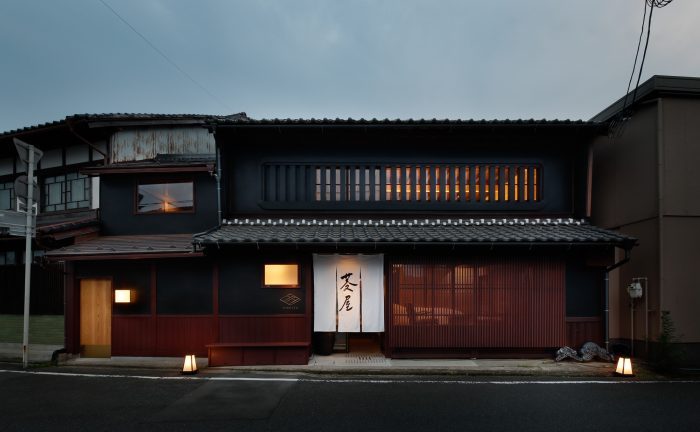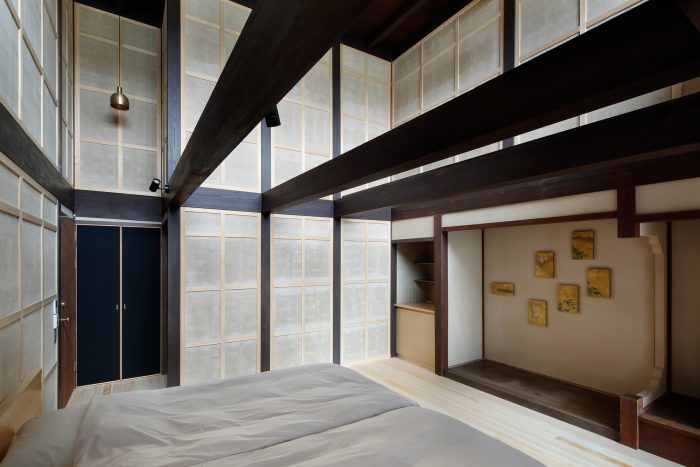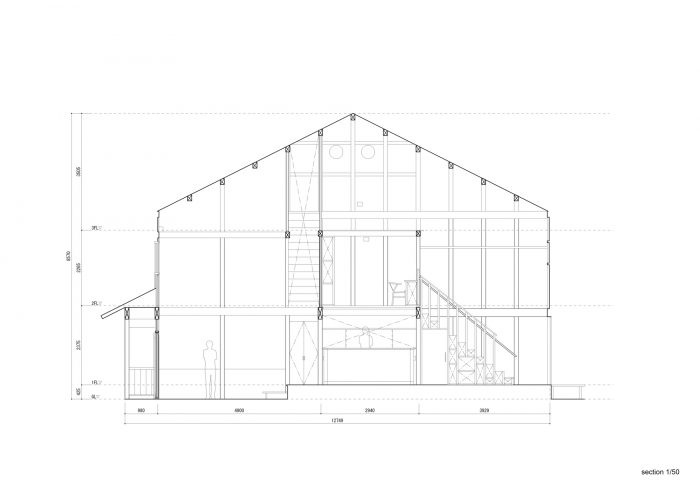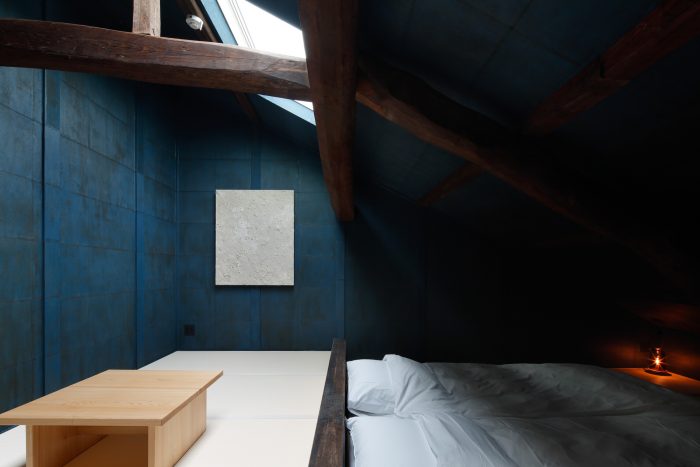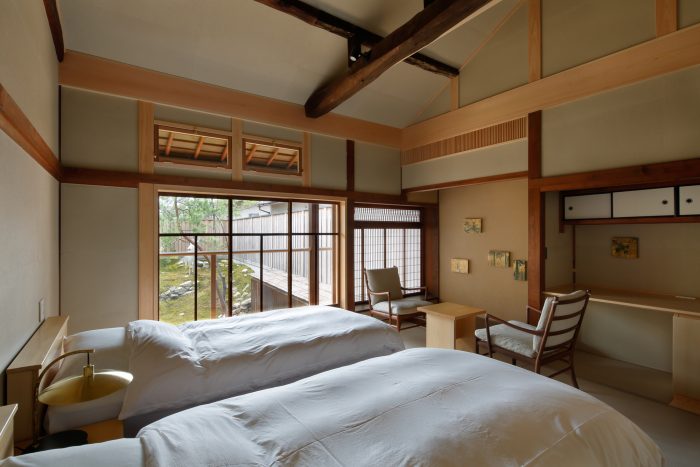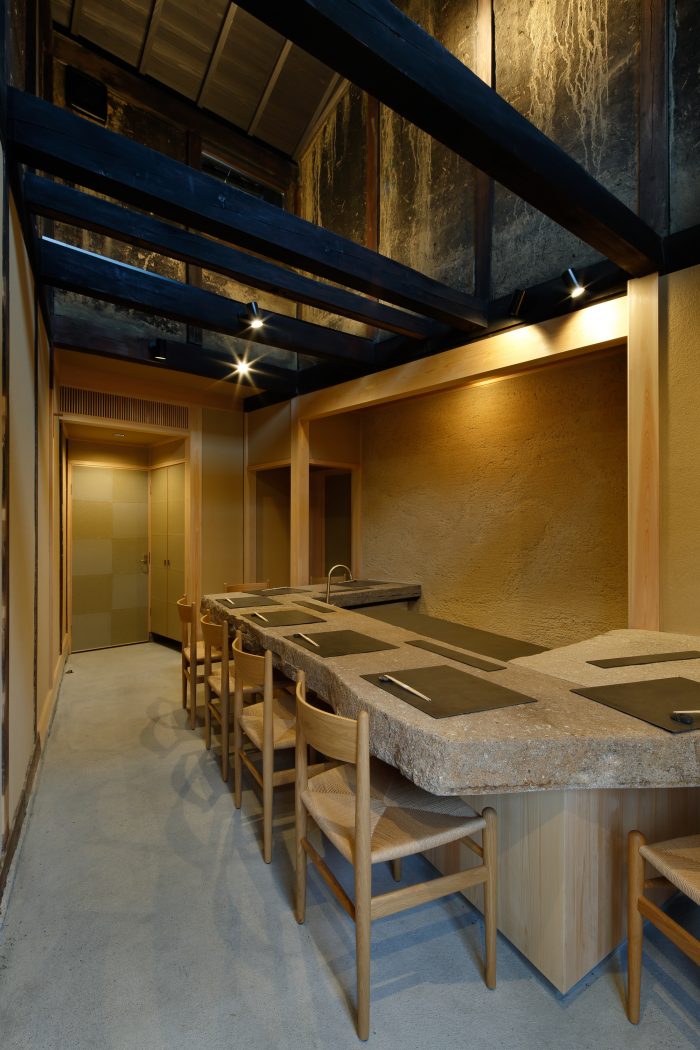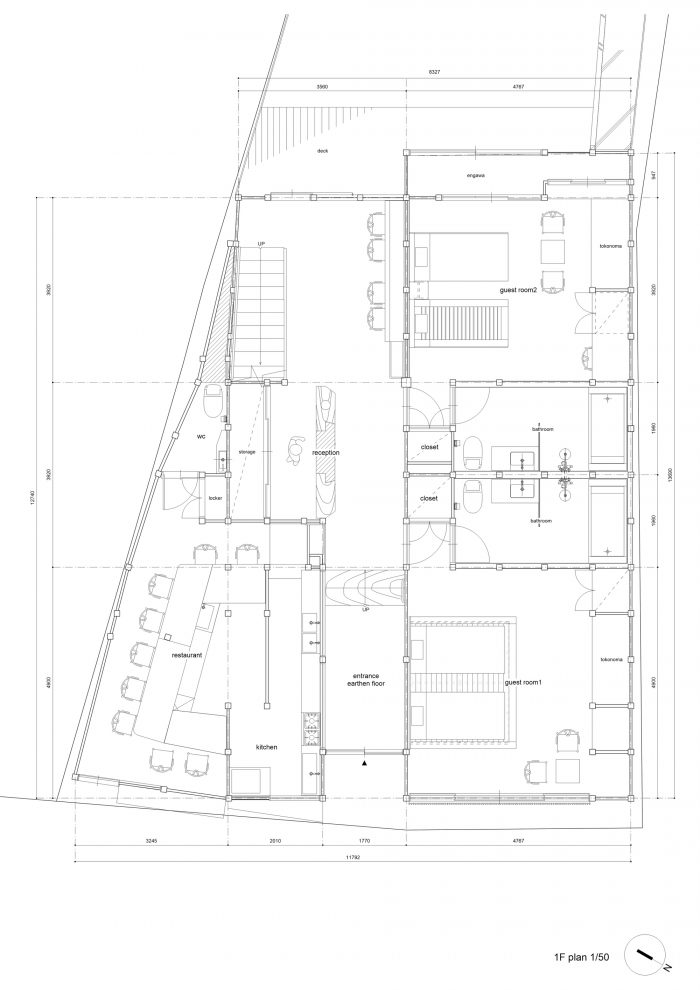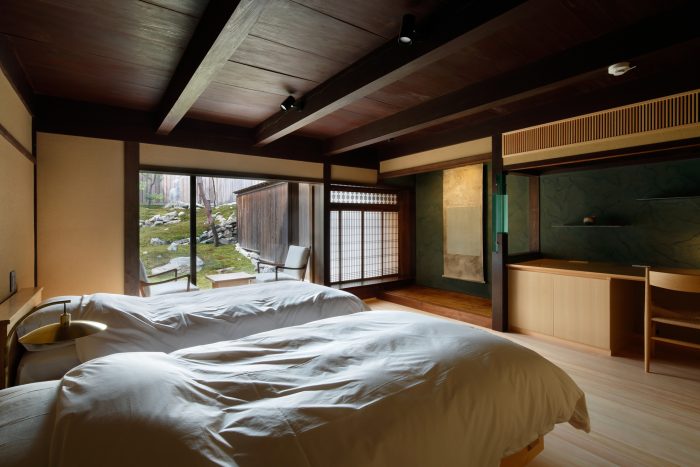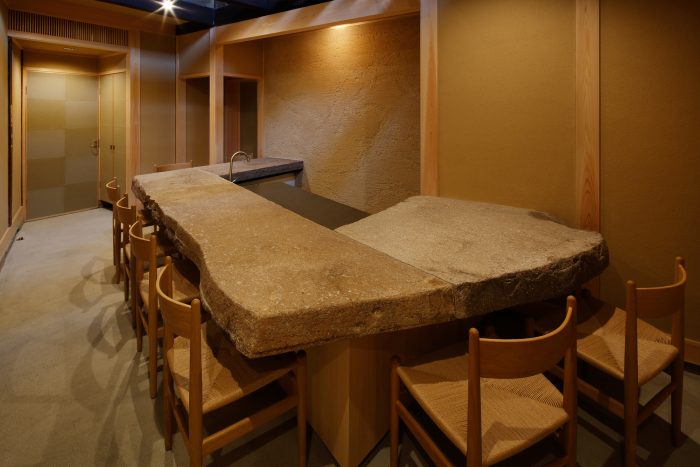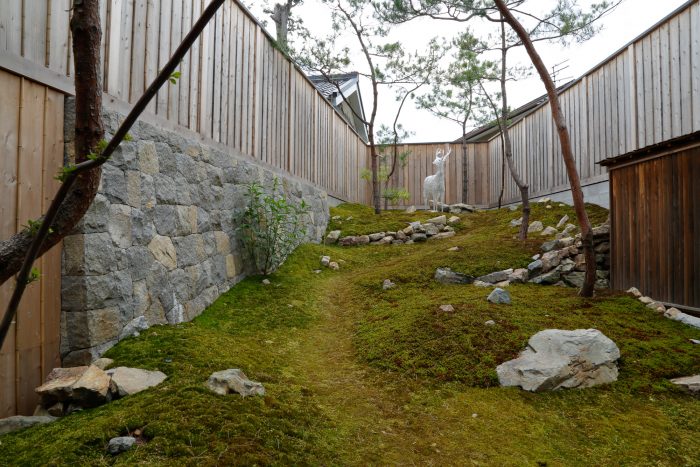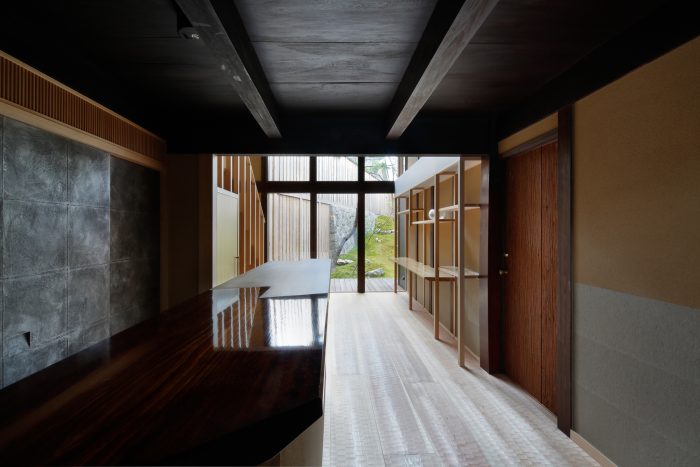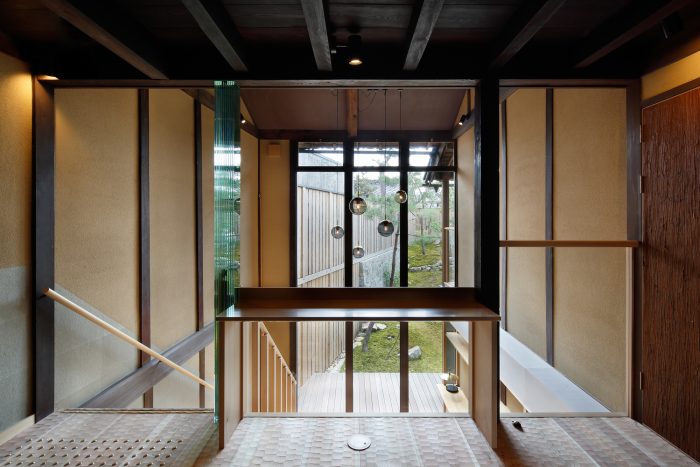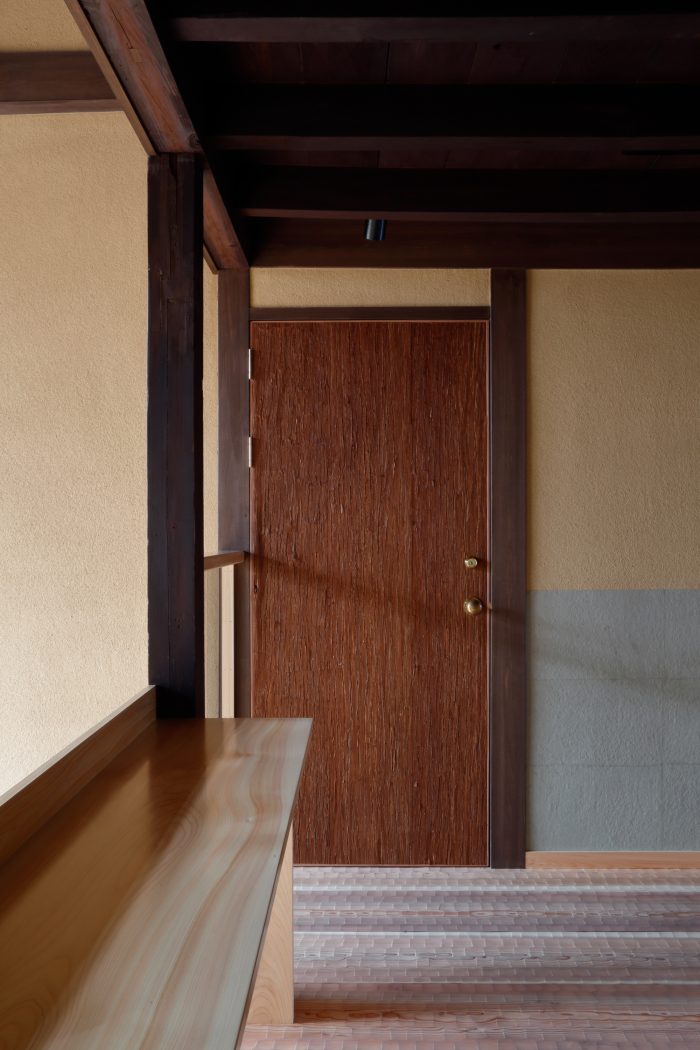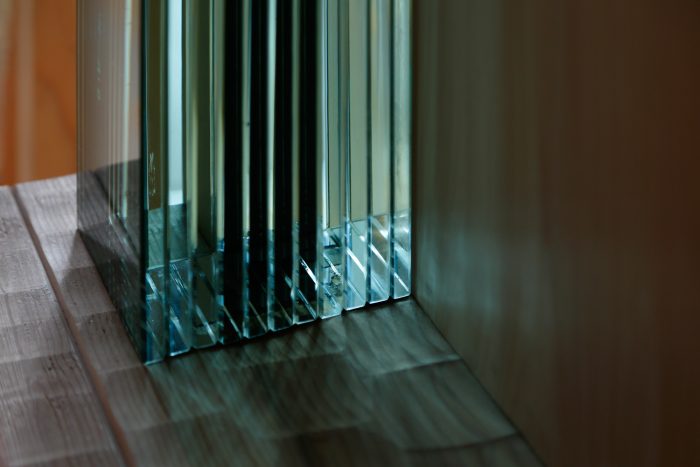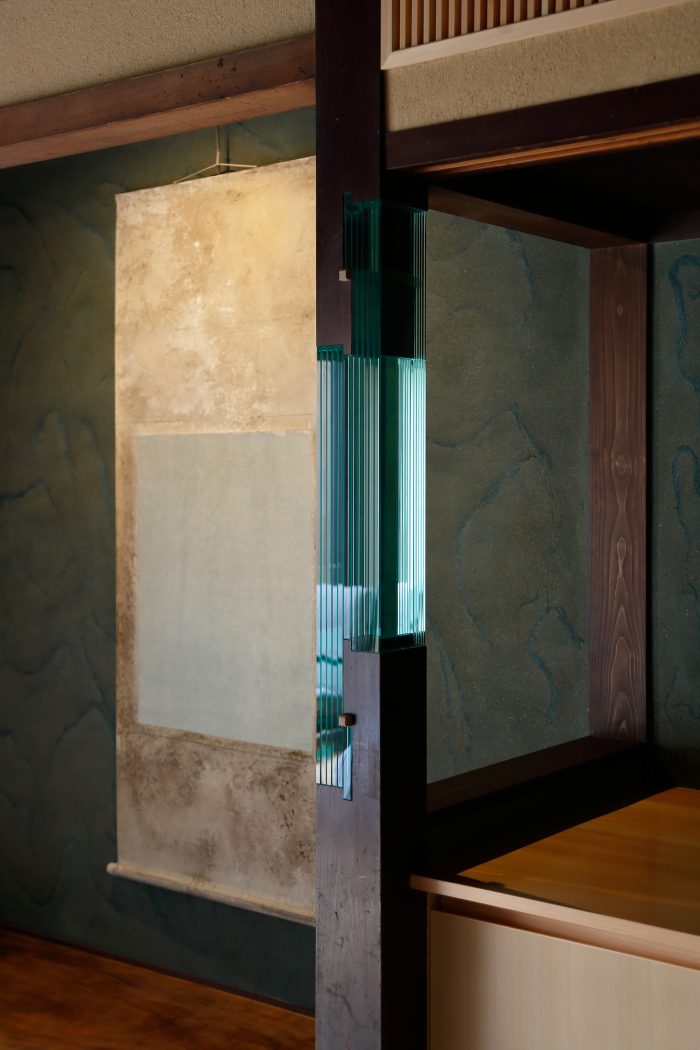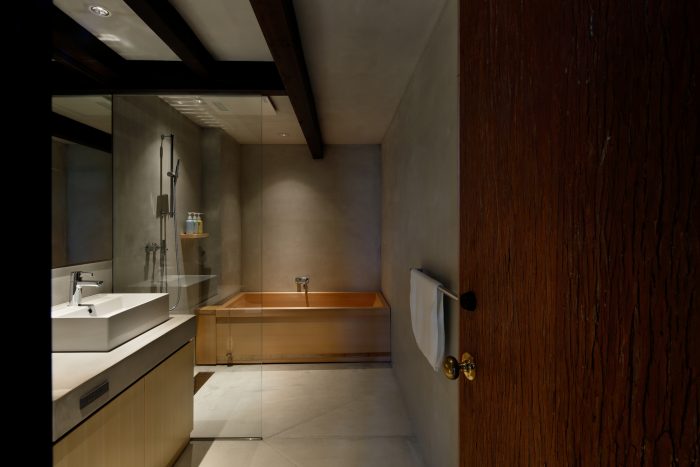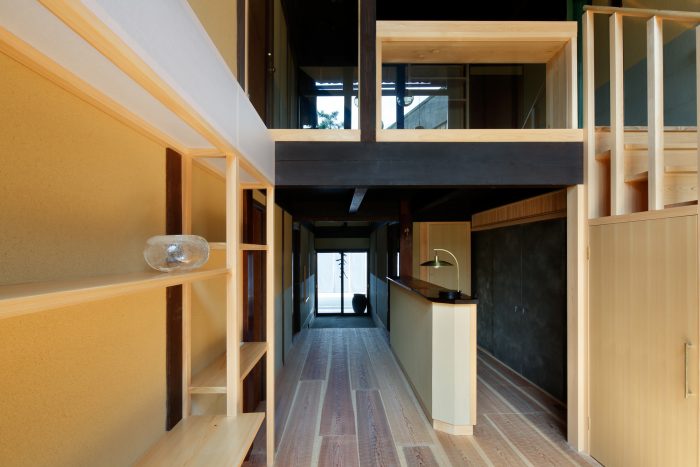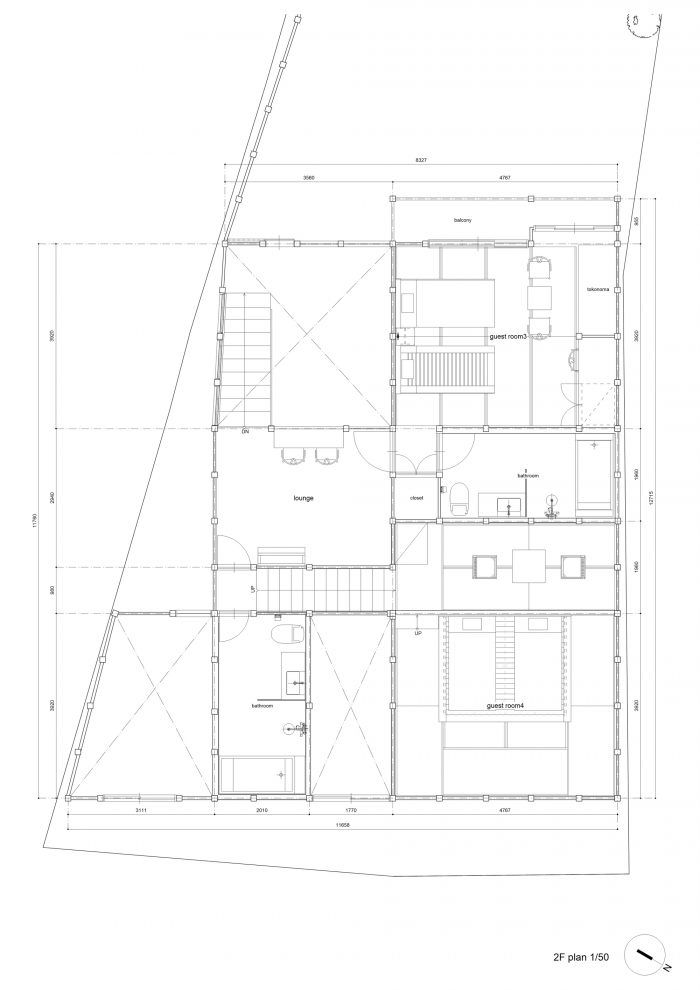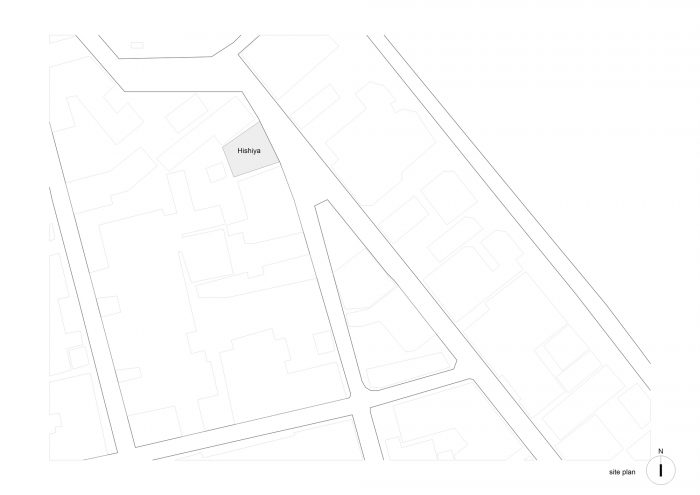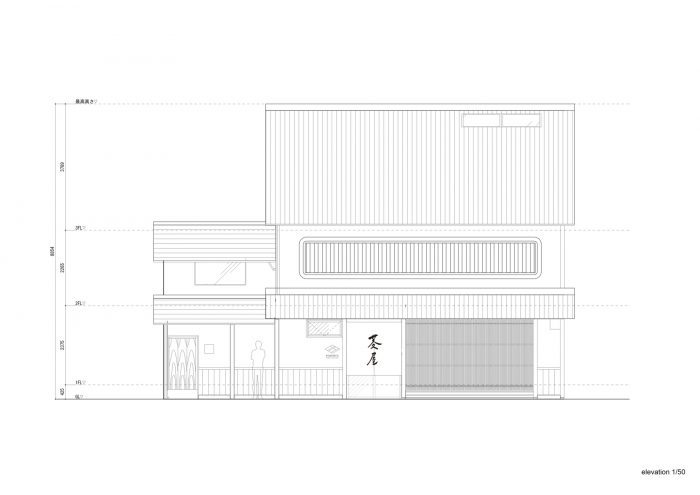本项目是对位于京都福知山市,由明智光秀创立的城下町所建的80年历史的民宅进行改造。虽然客户的家族一直在该地区长大,但近年来空置的房屋越来越多。客户目前在项目地附近经营着一家餐厅,但担心游客的住宿只能是商业化的酒店。
This project is a renovation of an 80 year old folk house built in a castle town founded by Akechi Mitsuhide, located in Fukuchiyama City, Kyoto. Although the client’s family has grown up in the area, the number of vacant houses has increased in recent years. The client currently runs a restaurant near the project site but was worried that the only accommodation available for visitors would be commercialized hotels.
在思考如何通过建筑来缓解该地区正在消散的繁华和气氛时,选择了利用当地材料、工艺和当地文化来打造一个象征小镇身份的旅馆的概念。
When thinking about ways in which architecture can alleviate the dissipating bustle and atmosphere of the area, a concept to create an inn that makes use of local materials, craftsmanship, and local culture to symbolize the town’s identity was selected.
在改造中,保留了原有的中庭,该中庭是为了应对尤拉河频繁的洪水而准备疏散到阁楼的。在改造中建立了一个接待空间、楼梯大厅、4间客房和一个小餐厅。原有的仓库被拆除,取而代之的是一个大花园。
The original atrium which was used for evacuation to the attic in preparation for the frequent flooding of the Yura River was retained in the renovation. A reception space, staircase hall, 4 guest rooms and a small restaurant were created during the renovation. The pre-existing warehouse was dismantled in place of a large garden.
每个房间都是由当地的工匠利用丹波的漆和石头、福知山的靛蓝染料、绫部的手工和纸、丹后的柏木等各种当地材料制作而成。餐厅的大台面使用了大块的石块。在外观上,重新运用了原建筑的材料,使改造后的建筑与原有的环境完美融合。
Each room was made by local craftsmen using various local materials such as lacquer and stone from Tamba, indigo dye from Fukuchiyama, handmade Japanese paper from Ayabe, and cypress wood originating from Tango. Large stone blocks were used to create a large table top for the restaurant. For exterior, materials used for the original building were reapplied as a way for the renovation to seamlessly blend in with the pre-existing context.
通过创造一个住宿的地方,一个个空置的房子变成了有人居住的设施,游客可以留在城市里,当地的手工艺人和作家有了就业机会,游客可以通过体验当地材料的工艺来了解坦巴和探戈。作为设计中某些部分现代化的手段,使用了玻璃柱代替木头,使颜色和材料形成对比。我们希望这个新空间的建立能够振兴该地区,并吸引新的人来到该地区。
By creating a place to stay, one vacant house becomes an occupied facility, visitors can stay in the city, local craftsmen and writers have employment, and visitors can learn about Tamba and Tango through experiencing the craftsmanship of the local materials. As means of modernizing certain portions of the design, glass columns were used instead of wood to give a contrast in color and materiality. We hope that the creation of this new space will revitalize the region and attract new people to the area.
建筑师:Fumihiko Sano Studio
面积:213平方米
年份:2020年
摄影:Yuna Yagi
厂家:NEW LIGHT POTTERY, JIMBO ELECTRIC, Panasonic, Sanwa Company, Yoshino Chuou Mokuzai Company
建筑师:Fumihiko Sano
设计团队:Fumihiko Sano Studio
承包商:Funakoshi Construction Firm Company Limited
城市:Fukuchiyama
国家:日本
Architects: Fumihiko Sano Studio
Area: 213 m²
Year: 2020
Photographs: Yuna Yagi
Manufacturers: NEW LIGHT POTTERY, JIMBO ELECTRIC, Panasonic, Sanwa Company, Yoshino Chuou Mokuzai Company
Architect In Charge:Fumihiko Sano
Design Team:Fumihiko Sano Studio
Contractor:Funakoshi Construction Firm Company Limited
City:Fukuchiyama
Country:Japan



